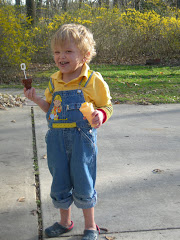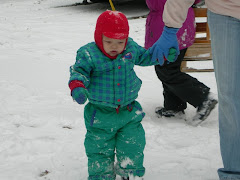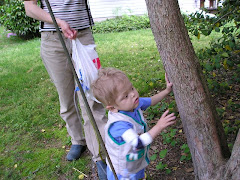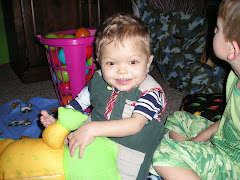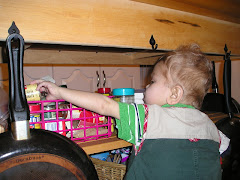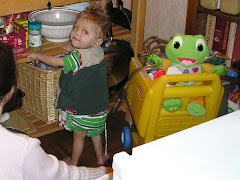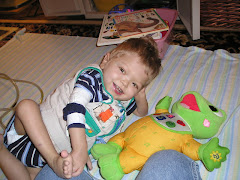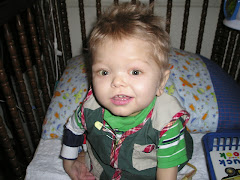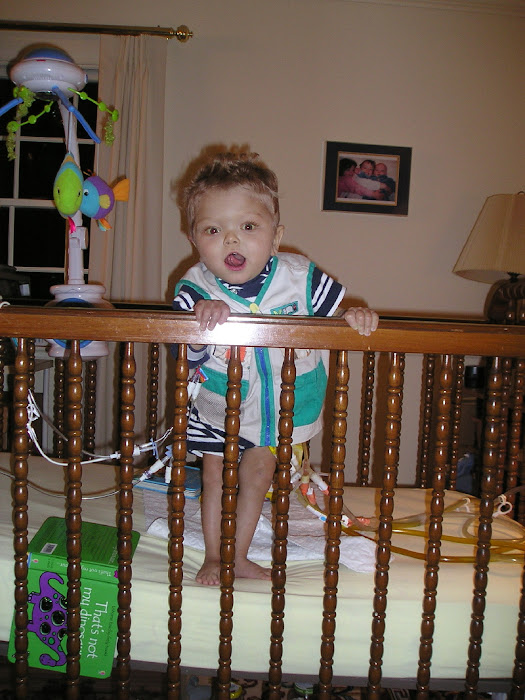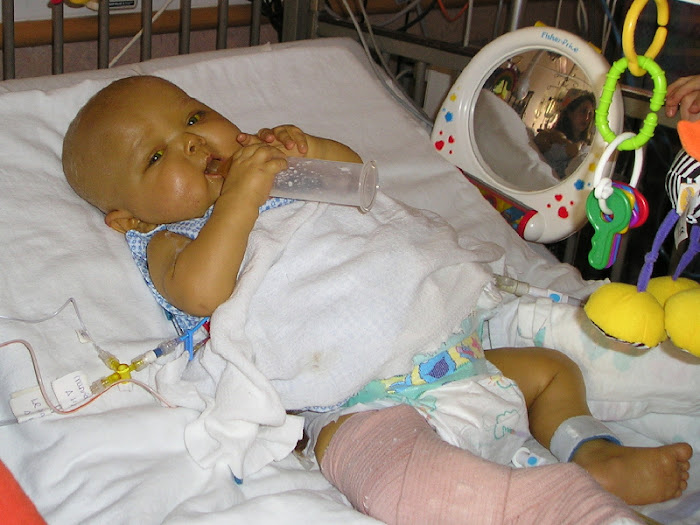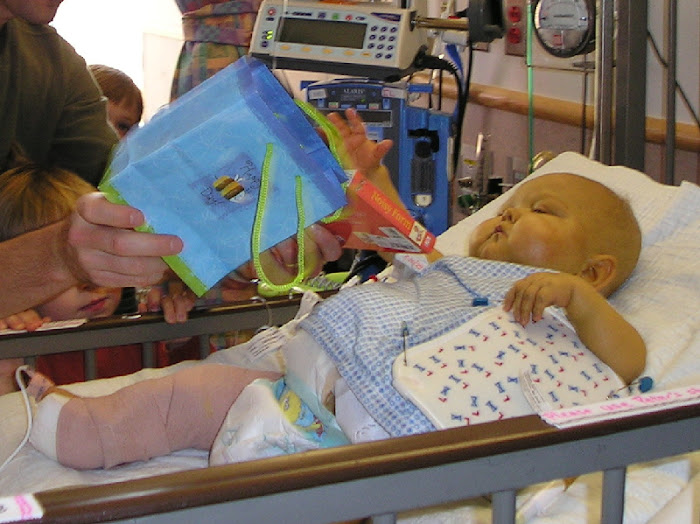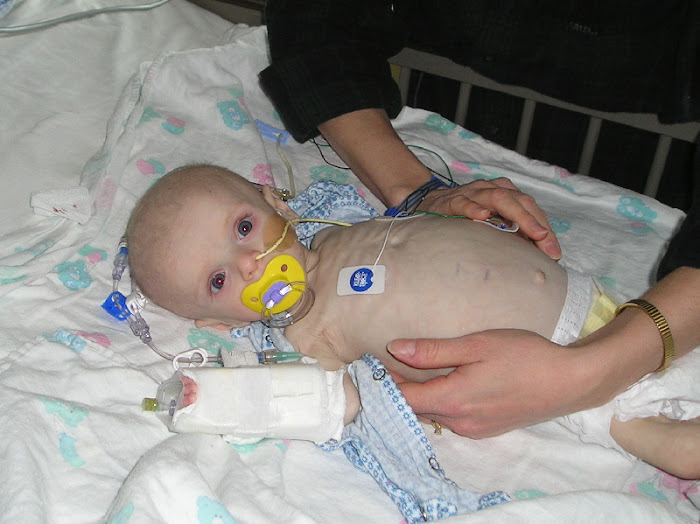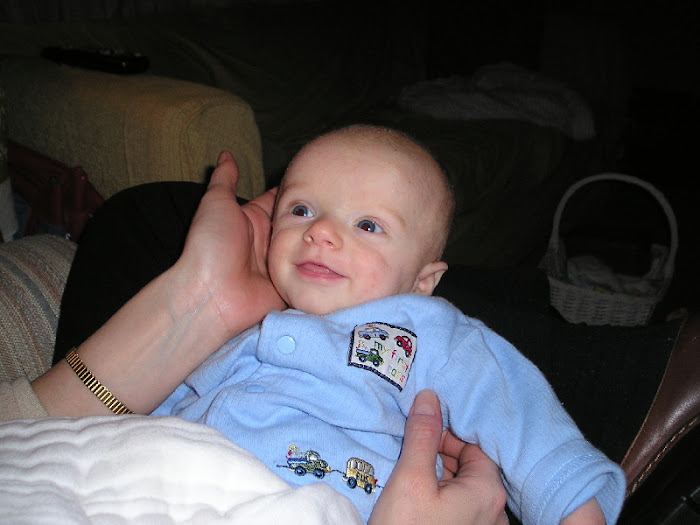The nutritional tests that were done a couple weeks ago have come back. They are normal, so the team does not feel that the cardiac issues are related to a nutritional issue.
The plan now is for Peter to have a cardiac catheterization to see what the cause is for the increased cardiac pressures and enlarged ventricles. The cardiologist kindly called me at home to discuss the procedure and why he feels we should proceed with it. Basically, he feels Peter's heart itself is not the issue, but since this is a fairly big change since his last cardiac imaging from two years ago, the cause needs to be found before the heart itself does become compromised and begin to work less effectively.
Although it only takes a little bit of room for me to type this up, the amount of discussion and consultation that went into this decision has been quite detailed and involved several top doctors at Boston Children's Hospital. I am a little worried about the catheterization, but only because I know it is invasive, not because of doubt on the parts of the physicians.
On the weight issue, I can't see that Peter has lost any more weight, but it is unclear if he has gained any. I can tell he has a little more fluid in his belly, so that adds some more weight to the scale, but his arms do not seem to be measuring any less around, so I will venture that he is at least holding with his real weight. We've definitely bumped up his calories since the last visit, with another 80 ml of formula per night, an additional 20 grams of Duocal per day, and about two to three tablespoons of peanut butter per week. (Skippy now makes chocolate PB and honey PB, which he thinks are terrific. He had given up on plain PB a long time ago, but thinks these flavors are great.)
Peter will be eight years old in just thirteen more days!! He wants Klondike bars as his "cake," and a lengthy trip to the library so he can look at lots of books on architecture and geography. He is such a character!
Saturday, October 19, 2013
Overnight feeds with no leaks!
I have to share a great item with those of you who use G-tubes. I came across it from another parent's site, but it took me 7 years of G-tube feeds to find out about it, so I am trying to spread the word from this blog as well.
It is a little device used to secure the feeding connector and keep it from disconnecting from the port of the feeding tube. It does not put holes in clothing like safety pins, nor is it sharp and capable of piercing tubes or skin like a safety pin. It is reusable and we are still on our first one even after 4+ months of use.
It is called an AMT Clamp Feeding Tube Connector. I have been able to obtain it through both of the enteral suppliers that Peter has had. (We just switched to a new provider last month, and I am so happy, but that is anther post for another time.) Here are photos of the AMT Clamp, along with reference numbers and what it looks like in use:
I hope this information helps other tube-feeders out there. We've had no feeding tube leaks and no torn bedclothes from safety pins since starting with this product!
It is a little device used to secure the feeding connector and keep it from disconnecting from the port of the feeding tube. It does not put holes in clothing like safety pins, nor is it sharp and capable of piercing tubes or skin like a safety pin. It is reusable and we are still on our first one even after 4+ months of use.
It is called an AMT Clamp Feeding Tube Connector. I have been able to obtain it through both of the enteral suppliers that Peter has had. (We just switched to a new provider last month, and I am so happy, but that is anther post for another time.) Here are photos of the AMT Clamp, along with reference numbers and what it looks like in use:
Before clamp is attached to port.
(I always tape medport closed to keep it from opening overnight,
in case you are wondering why it is taped. You could use the
clamp without tape on the medport if you wanted to.)
With clamp attached to port.
Clamp is tiny, flexible, and reusable
As you can see, we run Peter's tube through the neckline of his shirt, rather than under. For him, that works better at keeping the feeding tube from kinking overnight.
I hope this information helps other tube-feeders out there. We've had no feeding tube leaks and no torn bedclothes from safety pins since starting with this product!
Thursday, September 26, 2013
A very dry report of our last trip to Boston
Peter had his check-up in Boston about two weeks ago. We crammed in his intestinal rehab clinic visit, a follow-up with Dr. Jennings (his surgeon), a sedated cardiac MRI, a lab draw, a bone age scan (an x-ray), and a DEXA scan all into two days.
Peter is doing well enough overall to stay off TPN for now, but he is continuing to lose weight over the last several months. His arm circumference and skin fold measurements have both gone down. He has grown some in height, so he has been able to digest enough calories for lateral growth, but if he cannot stop losing weight, then he may need to go back on TPN to supplement his growth. It looks like his caloric intake is about 2300 calories a day, which should be enough, but there is some degree of malabsorption. We are currently trying to squeeze in a little more calories here and there over the next couple of months to see if we can prevent a need to return to TPN.
Peter's vitamin A and D levels are remaining low even with high supplementation. His platelets are under 30,000 now, which is a little lower than is has been. To put that is reference, a normal count for most people is 150,000 to 400,000. He still clots quite well though, which Dr. Kamin says is because his body has slowly gotten to that point and the platelets have functionally adapted. His white count is still considerably low as well (under 2). Looking at better lab news, the iron supplementation has proven good for resolving his anemia. The rest of the labs seemed OK enough, with the exception of calcium in his urine seeming to go up higher. Our plan is that he will have no calcium-containing foods for 4 hours before the next urine sample, and hopefully we will see less calcium in the urine.
Bone-wise, it looks like Peter's osteopenia is no worse. It is still present, but his bone-age is about right for his age, and that is good news.
Besides the let-down that Peter may have to return to TPN, the other disappointment was in the results of his cardiac MRI. The MRI showed that he now has dilated ventricles, which he did not have in the past. Dr. Kamin discussed possible causes with several of the doctors who are very familiar with Peter's abdominal issues and they do not feel this is related to intestine, liver, or spleen. That is a bit of a relief, as I don't know how much more surgery Peter's abdomen could take. There are two nutritional labs that are going to be drawn this week to see if they could be causing any of this, but that being the culprit is a long shot. The most likely area of concern is the heart or lung and I expect that will be the focus of additional testing.
Our priorities over the cardiac and nutritional follow up are that Peter gets to go trick-or-treating with his siblings and that he gets to celebrate his birthday at home, also with his siblings. Dr. Kamin thought we would be able to work that out just fine. Peter has envisioned such plans for trick-or-treating and for his birthday, and none of us want to disrupt those plans!
Peter is doing well enough overall to stay off TPN for now, but he is continuing to lose weight over the last several months. His arm circumference and skin fold measurements have both gone down. He has grown some in height, so he has been able to digest enough calories for lateral growth, but if he cannot stop losing weight, then he may need to go back on TPN to supplement his growth. It looks like his caloric intake is about 2300 calories a day, which should be enough, but there is some degree of malabsorption. We are currently trying to squeeze in a little more calories here and there over the next couple of months to see if we can prevent a need to return to TPN.
Peter's vitamin A and D levels are remaining low even with high supplementation. His platelets are under 30,000 now, which is a little lower than is has been. To put that is reference, a normal count for most people is 150,000 to 400,000. He still clots quite well though, which Dr. Kamin says is because his body has slowly gotten to that point and the platelets have functionally adapted. His white count is still considerably low as well (under 2). Looking at better lab news, the iron supplementation has proven good for resolving his anemia. The rest of the labs seemed OK enough, with the exception of calcium in his urine seeming to go up higher. Our plan is that he will have no calcium-containing foods for 4 hours before the next urine sample, and hopefully we will see less calcium in the urine.
Bone-wise, it looks like Peter's osteopenia is no worse. It is still present, but his bone-age is about right for his age, and that is good news.
Besides the let-down that Peter may have to return to TPN, the other disappointment was in the results of his cardiac MRI. The MRI showed that he now has dilated ventricles, which he did not have in the past. Dr. Kamin discussed possible causes with several of the doctors who are very familiar with Peter's abdominal issues and they do not feel this is related to intestine, liver, or spleen. That is a bit of a relief, as I don't know how much more surgery Peter's abdomen could take. There are two nutritional labs that are going to be drawn this week to see if they could be causing any of this, but that being the culprit is a long shot. The most likely area of concern is the heart or lung and I expect that will be the focus of additional testing.
Our priorities over the cardiac and nutritional follow up are that Peter gets to go trick-or-treating with his siblings and that he gets to celebrate his birthday at home, also with his siblings. Dr. Kamin thought we would be able to work that out just fine. Peter has envisioned such plans for trick-or-treating and for his birthday, and none of us want to disrupt those plans!
Sunday, August 11, 2013
Peter's formula and diet
This is Peter's diet now that he is off TPN. This post is in response to Kelly's question, but if it might be helpful to anyone else, please feel free to read as well.
Peter is on unflavored Pediasure Peptide 1.0. He takes 300 mL by G-tube at night, and to that we add 67 grams of Duocal and 15 grams of Beneprotein. Throughout the day, Peter eats the following by mouth:
400 grams plain Cabot Greek Yogurt (it has 22 grams of fat per cup)
180 to 200 grams of pureed fruit
180 grams of pureed meat
90 to 100 grams of pureed vegetable with about 5 grams unsalted butter
630 ml of Lactaid milk
60 to 240 ml of water
We add 10 grams of Duocal to his daytime food twice a day
About 1 Tbsp of Barleans Omega Swirl fish oil (He just started that a month ago, now that he is off IV Omegaven. So far, it is the only enteral fish oil that doesn’t make him smell like fish. We use the Key Lime flavored one.)
He will take additional foods on some days, like an ounce of fresh fruit, or an ounce of cookies, but that food is more like a “bonus” to his regular intake.
We have found that finding foods low enough in sodium is a huge challenge. Commercial jarred baby food is generally pretty low in sodium. We have been buying jars of baby food for Peter for years, even though he is seven. The Duocal and Beneprotein have no sodium, so they add more calories and protein to Peter’s formula without added sodium or fluid, both of which aggravate his ascites.
Although Peter can chew many foods well, he is slow with the process, and by the time he has taken just a few bites, he says he is full. We have basically been tricking his mind/body by feeding him his pureed food quick enough that it all gets in him before he feels full. For example, for dinner, he will have two jars of pureed meat (120 ounces) within 3 to 5 minutes. We set the timer for 10 minutes and he is free to go play then. After the timer rings, he comes back to finish the rest of his dinner, which is a third jar of pureed meat and 90 grams of pureed vegetable. Then he is done his meal. His lunch and breakfast are done in the same manner, but with the Cabot yogurt and pureed fruit.
One of us usually feeds Peter, as when he feeds himself, he goes so slow that his body tells him he is full before he has gotten very far. That may sound very drastic, but in our case the need to get Peter off TPN to preserve the liver far outweighed the need for him to be able to feed himself independently. (He already has possible cirrhosis, definite fibrosis.) He holds and drinks his own milk, although he needs constant encouragement to drink it three times a day. Any snacks he feeds himself. As we move further along, I expect he will eventually take over his own feedings and even move away from purees. We are attempting some of that now that we have more free time without the TPN and ostomy issues.
Of note, it took us several years to work up to this amount of feeds with Peter. He literally started with 5 ml of milk once a day at about age 1. There were many times over several years that we would push Peter too hard with enteral feeds and he would vomit. Then we would have to back down from the amount of feeds we had gotten up to and try a more gradual approach to the new feeding goal. At this point, we seem to be at a good point with Peter’s caloric enteral intake, where he is slowly gaining some weight, but not feeling so full he is nauseated.
Lastly, Peter has most of his intestine. It has scarring and a unique pathway, but it is mostly all there. From what I understand about short-gut, having enough bowel length is a very big factor in getting off TPN/IV fluids.
Wednesday, August 7, 2013
Riding on the scooter now
This summer, Peter has made many strides physically. He says having the ostomy bag gone has made it more comfortable to run. I also wonder if being off TPN has made him generally feel better. Just a few months ago, Peter had very little interest in riding a scooter even one time down the driveway. He would go ever so slowly and complain the whole way. Now he is able to ride the scooter halfway around the block and back, actually enjoying himself and going at enough speed to glide part of the way. Go Peter!
Wednesday, July 31, 2013
Updates on health and enoying summer
Peter is still doing well without his PICC line. He has been TPN-free for four months and without a central line (his PICC line) for about five weeks. He hasn't really gained much weight, but he has grown a little bit in height. His arm circumference measurement was only slightly down, but still in good range, so we can now wait to go up to Boston for two more months instead of going up once a month.
Peter's check up included a cardiac exam, complete with echo and EKG. His jugular veins seem pronounced, as mentioned in the previous post, and after the echo, there is concern about his heart being in a "high cardiac output state." He will get a cardiac MRI when we are up next. The high cardiac output could be due to the portal hypertension or possibly a new arteriovenous malformation (AVM). If this is a new AVM, it should not lead to a situation like we encountered with the liver, but rather should be capable of getting closed off if it can be found. OR, the MRI may show that he really doesn't have such a high output after all. Apparently, the MRI can take more accurate measurements of the cardiac output than an echo. His heart rhythm is good and he is not having outwardly visible cardiac symptoms. There is not an urgency for the test, so we are going to get the test done when we are back in Boston for his usual CAIR visist again.
The endoscopy went well. Peter's esophageal veins were essentially unchanged and there was nothing that needed to be banded. That is excellent news. Although we see HUGE collateral veins on his abdomen, which extend all the way up to his armpits, they are not showing up in the esophagus where a bleed could be life-threatening. I have heard it put that the collateral veins are helping to decompress his portal hypertension, so despite the aesthetic issue of them being visible all over his belly, they are better for his health.
Peter's stool tests indicate better food absorption than we thought, so that was more good news. Also, he absorbed his iron well enough last month that his iron stores are in a normal range and he was able to go down considerably in the dose. We are now trying to cut back on his Protonix (pantoprazole), which is a proton-pump inhibitor, used for controlling acid reflux. He is down to 8 mg from 20 mg, and seems to be tolerating the wean fine at this point. He has been on daily acid reflux meds since his early hospitalization as an infant. To me, it would seem that the more we work his gut with feeds, the greater the chance of gastric distress in a person who has had the GI issues he has had. It is nice to see that may not be the case.
Back to the PICC-less Peter.... he has been enjoying his first summer of getting really wet. He still won't admit to liking baths, but he has usually rushed into the tub within a minute of the water going on. Below are some photos from the summer. Peter has finally been able to, and willing to, get into the wading pool on some of the hot days. He splashed around in the water and even ventured kayaking on our last trip to Boston, where we visited with an aunt and uncle on the lake. This summer has been his first time in the water, and he has had so much fun!
Peter is still into landmarks and geography, and on this trip, Peter got to see the CT State House building up close, instead of our usual whizzing by at 65 MPH on the highway. He was so pleased to get a chance to see it up close! Yes, this child is a bit of a geography fanatic. How many children do you know who at age seven pour over atlases and can tell you the names and locations of places like United Arab Emirates, the Platte River, and the capitals of nearly every country in the world? The doctors and nurses all get a kick out of quizzing him to see if they can stump him. Now we need to find a friend for him who likes geography and wants to share this interest with him!
Peter's check up included a cardiac exam, complete with echo and EKG. His jugular veins seem pronounced, as mentioned in the previous post, and after the echo, there is concern about his heart being in a "high cardiac output state." He will get a cardiac MRI when we are up next. The high cardiac output could be due to the portal hypertension or possibly a new arteriovenous malformation (AVM). If this is a new AVM, it should not lead to a situation like we encountered with the liver, but rather should be capable of getting closed off if it can be found. OR, the MRI may show that he really doesn't have such a high output after all. Apparently, the MRI can take more accurate measurements of the cardiac output than an echo. His heart rhythm is good and he is not having outwardly visible cardiac symptoms. There is not an urgency for the test, so we are going to get the test done when we are back in Boston for his usual CAIR visist again.
The endoscopy went well. Peter's esophageal veins were essentially unchanged and there was nothing that needed to be banded. That is excellent news. Although we see HUGE collateral veins on his abdomen, which extend all the way up to his armpits, they are not showing up in the esophagus where a bleed could be life-threatening. I have heard it put that the collateral veins are helping to decompress his portal hypertension, so despite the aesthetic issue of them being visible all over his belly, they are better for his health.
Peter's stool tests indicate better food absorption than we thought, so that was more good news. Also, he absorbed his iron well enough last month that his iron stores are in a normal range and he was able to go down considerably in the dose. We are now trying to cut back on his Protonix (pantoprazole), which is a proton-pump inhibitor, used for controlling acid reflux. He is down to 8 mg from 20 mg, and seems to be tolerating the wean fine at this point. He has been on daily acid reflux meds since his early hospitalization as an infant. To me, it would seem that the more we work his gut with feeds, the greater the chance of gastric distress in a person who has had the GI issues he has had. It is nice to see that may not be the case.
Back to the PICC-less Peter.... he has been enjoying his first summer of getting really wet. He still won't admit to liking baths, but he has usually rushed into the tub within a minute of the water going on. Below are some photos from the summer. Peter has finally been able to, and willing to, get into the wading pool on some of the hot days. He splashed around in the water and even ventured kayaking on our last trip to Boston, where we visited with an aunt and uncle on the lake. This summer has been his first time in the water, and he has had so much fun!
Peter is still into landmarks and geography, and on this trip, Peter got to see the CT State House building up close, instead of our usual whizzing by at 65 MPH on the highway. He was so pleased to get a chance to see it up close! Yes, this child is a bit of a geography fanatic. How many children do you know who at age seven pour over atlases and can tell you the names and locations of places like United Arab Emirates, the Platte River, and the capitals of nearly every country in the world? The doctors and nurses all get a kick out of quizzing him to see if they can stump him. Now we need to find a friend for him who likes geography and wants to share this interest with him!
Monday, June 10, 2013
The PICC line has been removed!!
We are happy to announce that Peter had his PICC line removed by the team in Boston this past Thursday!! Alleluia!!
Right after line was pulled out, pressure being held over the site.
Happiness to have no more PICC, to understand that the hard work of eating has paid off, and to realize that pulling the PICC really did not hurt after all.
Peter has not been without a central line (in his case, a PICC line) since he was 5 months old. He is now 7 years and 7 months old.
It is strange, but delightful, to not have a PICC line to worry about right now. Coram and I are going to arrange the pick-up of his four infusion pumps this week: one for TPN, one for Omegaven, one for IV fluids, and one for IV iron. Bedtime is now just meds through the G-tube and hooking up the formula. No ostomies, no IV flushes or IV meds. There has been so many significant achievements over the years, and especially over the past several months. We are so grateful!!
After such great news, I am a little reluctant to mention the downside to Thursday's visit in Boston, yet there are some things still concerning the team. One is that Peter's abdominal and chest veins are more prominent than ever. Dr. Jennings thinks the veins in the neck are also distended. We will follow up next month with an endoscopy to look at the esophageal veins, and possibly an echocardiogram of the heart to check on the vessel size there. The concern, as I understand, is that his portal hypertension may have gone up. The ultrasound of the abdomen on this past visit looked good though, so it is possible that these more prominent veins are only looking more distended, but are not actually more problematic. Peter also may be having some absorption issues in his gut. We are sorting that out with some stool testing from home and increasing some of his calories and vitamins to see if that helps.
One could ask why the PICC line was pulled out if everything is not perfect. Peter has gone two months without using his PICC line for IV fluid or TPN. He has gone one month without needing IV iron, and in fact has brought up his iron stores better with enteral iron over the last month. Continuing with the main goal as preservation of the liver, it is better for him to have no central line than to later on have to put one in again if he demonstrates need for one. A central line is made of plastic and bacteria love plastic, so there is always a fairly high risk of infection that is fairly when someone has a central line. Infections from central lines can quickly lead to sepsis and organ damage, and the liver can be particularly affected. We also go back to that quality of life issue, where it makes sense to get rid of something burdensome if it is not really needed. Peter can now get wet (summertime!) from head to toe and there is no line to worry about. He isn't so keen on the idea of going in a pool, but is thrilled to be able to wash his own hands and not have me worry that he'll get his PICC line wet. Won't it be grand if he can keep the PICC line out for good!
Thursday, May 2, 2013
Still off TPN and making many enteral changes
Peter is still off IV nutrition. He had his CAIR appointment in Boston last week. He grew another centimeter taller, but the weight gain is not true weight gain, but rather is fluid retention. We are trying to concentrate his overnight formula and cut back on the volume. He had gotten up to 440 ml of formula overnight, and we are cutting back to 400 ml formula, with extra Duocal in it to add more calories.
Meanwhile, we are trying to get rid of his IV iron. This week he started enteral iron drops instead. The recommended dose was surprisingly high to me, but the team has researched carefully and assured me this is the correct amount. Hearing the dose for Peter and knowing that he only had his ostomy closed two and a half months ago and that this medication may cause constipation even at normal doses, I have been very cautious as we start our way up to what has been prescribed. He is supposed to get 69 mg, twice a day. So far, I have him up to 23 mg twice a day and he is doing OK. The reason for the really high dose is that his stores are below normal. He has been taking IV iron for years, but after his last two surgeries, has not gotten his iron levels back to a normal range. The plan is to keep working him up to a normal range enterally, to prove that his bowel can absorb and handle the iron that he needs.
If his bowel can handle his iron needs, that gets us closer to getting the IV PICC line out on our next visit to Boston. To get the PICC line out, he will need to demonstrate that he has no need for it for IV nutrition or IV meds (iron is the only med he is currently still taking IV). Labs can always be drawn without the PICC line, although that has always been a nice perk to having one.
Other news is that Peter's zinc and vitamin D stores are low. We are going to begin supplementing with extra zinc, beyond what is in his multivitamin. The vitamin D stores have been an ongoing issue for a good while, with supplementing going as high as 8000 IU to as low as 2000 IU. We are going to try 4000 IU this month and see how he does on that.
Meanwhile, Peter's multivitamin will be changing, as the company is no longer making the vitamin, Source CF. Peter does not have CF (cystic fibrosis), but requires a multivitamin with high amount of fat soluble vitamins, and this one is made for patients with CF. Peter will switch to AquADEKs brand now. It is not exactly the same as Source CF in vitamin amounts or ingredients, but there is little choice when trying to find other brands of fat-soluble vitamins that are actually made to be water-soluble for those who may have fat malabsorption.
As you can see, there are many changes taking place with Peter's enteral intake. The "funny" thing about all of these changes though, is that patients are not supposed to make more than one change at a time, so that if there is a side-effect, it is more obvious what has caused it. I am trying to space out the changes as best I can, and hope that there are no unwanted side-effects, but if there are, that I can figure out what new change caused it. There will be lots of detailed record-keeping this month!
Meanwhile, we are trying to get rid of his IV iron. This week he started enteral iron drops instead. The recommended dose was surprisingly high to me, but the team has researched carefully and assured me this is the correct amount. Hearing the dose for Peter and knowing that he only had his ostomy closed two and a half months ago and that this medication may cause constipation even at normal doses, I have been very cautious as we start our way up to what has been prescribed. He is supposed to get 69 mg, twice a day. So far, I have him up to 23 mg twice a day and he is doing OK. The reason for the really high dose is that his stores are below normal. He has been taking IV iron for years, but after his last two surgeries, has not gotten his iron levels back to a normal range. The plan is to keep working him up to a normal range enterally, to prove that his bowel can absorb and handle the iron that he needs.
If his bowel can handle his iron needs, that gets us closer to getting the IV PICC line out on our next visit to Boston. To get the PICC line out, he will need to demonstrate that he has no need for it for IV nutrition or IV meds (iron is the only med he is currently still taking IV). Labs can always be drawn without the PICC line, although that has always been a nice perk to having one.
Other news is that Peter's zinc and vitamin D stores are low. We are going to begin supplementing with extra zinc, beyond what is in his multivitamin. The vitamin D stores have been an ongoing issue for a good while, with supplementing going as high as 8000 IU to as low as 2000 IU. We are going to try 4000 IU this month and see how he does on that.
Meanwhile, Peter's multivitamin will be changing, as the company is no longer making the vitamin, Source CF. Peter does not have CF (cystic fibrosis), but requires a multivitamin with high amount of fat soluble vitamins, and this one is made for patients with CF. Peter will switch to AquADEKs brand now. It is not exactly the same as Source CF in vitamin amounts or ingredients, but there is little choice when trying to find other brands of fat-soluble vitamins that are actually made to be water-soluble for those who may have fat malabsorption.
As you can see, there are many changes taking place with Peter's enteral intake. The "funny" thing about all of these changes though, is that patients are not supposed to make more than one change at a time, so that if there is a side-effect, it is more obvious what has caused it. I am trying to space out the changes as best I can, and hope that there are no unwanted side-effects, but if there are, that I can figure out what new change caused it. There will be lots of detailed record-keeping this month!
Saturday, March 23, 2013
Almost 7 years to the date....
Peter had his CAIR (Center for Advanced Intestinal Rehabilitation) check-up on Thursday, a month post surgery, as planned. We went with the expectation that the team would reduce his TPN from 4 nights/week to 3 nights/week and then we'd continue working on reducing that further over the next month or two, eventually getting down to none within two months or so. To our complete, wonderful surprise, the team said they'd like to see Peter stop TPN completely now! His TPN calories are few enough that he should be able to compensate for them by diet. He already receives his multivitamin by mouth, so TPN is not necessary for delivery of vitamins. His volume of stool is low enough that he does not need the fluid in TPN for fluid replacement. In fact, Peter needs less fluid since he is so prone to ascites. So, we have all agreed to stop Peter's TPN and see how he does over the next month. He will go back for another check-up then, to see what his labs are like and whether he has been able to maintain his weight.
Back in January 2012, Peter went off TPN, but within a month, he had lost significant weight. His face had so little fat on it that his forehead would wrinkle like an old man's and his bottom was starting to look wasted. He no longer has the ostomy though, so as long as his intestine is able to handle and absorb the increasing amounts of food he will need to eat, he stands a much better chance at succeeding in staying off TPN this time.
Peter's good news occurs almost seven years to the date when we found out that he was sick and needed hospitalization. Lent 2006 began with Peter and I going to the hospital for a week to find out why he was so anemic. Now, near the end of Lent 2013, we feel an extra reason for gratitude this Easter. While Peter will always have some health issues of real concern, it is important to rejoice in the small and big blessings that we receive along the way.
Back in January 2012, Peter went off TPN, but within a month, he had lost significant weight. His face had so little fat on it that his forehead would wrinkle like an old man's and his bottom was starting to look wasted. He no longer has the ostomy though, so as long as his intestine is able to handle and absorb the increasing amounts of food he will need to eat, he stands a much better chance at succeeding in staying off TPN this time.
Peter's good news occurs almost seven years to the date when we found out that he was sick and needed hospitalization. Lent 2006 began with Peter and I going to the hospital for a week to find out why he was so anemic. Now, near the end of Lent 2013, we feel an extra reason for gratitude this Easter. While Peter will always have some health issues of real concern, it is important to rejoice in the small and big blessings that we receive along the way.
Sunday, March 3, 2013
Another surgical success
 |
| Look who's missing an ostomy bag! |
 |
| Our little warrior's battle-scarred belly |
 |
| Fishing in the tub |
 |
| Look who's wearing real pants! |
 |
| Feeling good |
I am hoping these photos illustrate what has been new with Peter lately. He has has last stoma taken down in early February. That was his ileostomy, which we had unsuccessfully attempted to close last Fall. It is now closed, and you can see the scar in the top photo, on his left lower abdomen. The darker circular area of skin around the suture line shows is where he has worn an ostomy bag for the last 6 3/4 years. I think that coloration will eventually go away, and the suture line will lighten in color over time. The white dressing that is in the photos is just gauze and tape to secure his MICkey G-tube button, not anything related to the surgery.
Peter has had to wear overalls or one-piece outfits up until this time to keep his ostomy bag from getting tugged on by the waist of pants and from getting snagged on something and popped if we kept in on the outside of a pair of pants. (Remember, he is a little boy, and rolling on top of toys on the floor is part of his nature.) The problem with overalls has been that he cannot get the straps over his shoulders and fastened by himself. As of two days ago, he has discovered that pants are now the way to go (elastic waist for now, snap and zipper later on).
We also convinced him to try the tub with a little bribery of computer time. He has had sponge baths for almost 7 years, ever since he had his first PICC line back in April of 2006. We have tried tub baths about three other times, but a wet ostomy bag was very upsetting to him. Today there was no bag to get wet, so he felt more comfortable trying again. The big smile was there a good bit, so I think he actually liked the bath too. Though he has a PICC line protector on, it isn't a great fit on him, so we just kept his arm out of the water when it was on. If he really begins to enjoy tub baths, maybe we'll get a better PICC protector, or if things go according to plan (that is always a big IF), then maybe he will get off TPN in the next several months and not even need one.
Back to the surgery....Peter spent 11 days in the hospital post-op, which was 3 days less than we anticipated. There were a few shaky days, where we were waiting to see if Peter was going to need a stent put into his liver before we went home to help with bile flow due to dilated bile ducts (an unexpected issue uncovered with his MRI), and watching to see if the closed ostomy surgical site would open back up and the surgery fail like last time, especially as people voiced concerns that the fascia underneath is just "paper-thin." The liver stent may or may not ever be needed, but at this juncture it was determined we can just watch and see. In the end, this surgery gave us just a little difficulty with the surgical healing afterwards, but that was nothing compared to the infection and poor healing of the prior two surgeries, or the ineffectiveness of the first fistula surgery prior to that.
We have had difficulty embracing this new reality of care for Peter as we should. It is an easier amount of care not having an ostomy, and no longer having that underlying nagging worry about the ostomy bag popping, leaking, or needing to be emptied. So often there have been health issues that crop up, and Peter's prior three surgeries were been laden with problems, so we've been tenuous in our enthusiasm and in posting about this surgery, almost waiting for an issue to occur yet again. I don't know if we are being wisely cautious or just foolishly pessimistic. I don't want to keep waiting for something to go wrong though, so today I am posting the very good news about Peter's progress. We are grateful for the success of his surgery, for the freedoms we are finding with no ostomy, and for the satisfaction he has found in his new independence. We have so much to be thankful for!
(This 3/3 entry updated 3/4, with a few details I'd left out. Hopefully it all makes sense!)
Sunday, January 20, 2013
Strep, potty, eyes, and independence
So much time has gone by since the last post.... again.
Peter had strep throat right before Christmas. Aside from the common cold, this was Peter's first "normal childhood illness" that I can recall. It turned out that 5 out of the 7 of us had it, but no one knew until I ended up making the hour and 20 minute drive to the ER at CHOP just before dawn with an axillary temperature of 102.6 degrees. That isn't too terrible of a temp for most people, but if you have a central line (which is a PICC line in Peter's case) it is a big concern for infection of the line and possibly ensuing sepsis. The "good" news about it all though, was that Dr. Kamin started Peter on antibiotics at home earlier that day when his temp was lower, after the home nurse had drawn labs and cultures. That one dose of antibiotic was enough to get Peter back on track within a few hours of the fever spiking higher. The positive rapid strep test performed at the ER and negative cultures at the 15 hour mark, gave us the OK to go home from the ER after 7 hours, instead of going inpatient. What a relief that was! After Peter was diagnosed, a quick trip to the pediatrician confirmed strep for two of his siblings as well. At that point, Chris and I knew we had it even with no diagnosis. The frustrating part of the whole scenario though, was that NO ONE locally would see him. His local pediatrician could have diagnosed strep in the office earlier that day, but their rule is "temp and central line = ER." The local ER will not draw labs off a PICC line though, nor do they really handle pediatric patients like Peter, as I found out via phone call that day. Had Dr. Kamin not been willing to help us manage things at home with Peter, the event would have been an inpatient stay, with the "big guns" antibiotics that are used for line infections, quite costly for the insurance company, and frustrating for all of us, most of all Peter who just wanted to be home again. I will never be able to thank him enough for all the dedicated care he has given Peter over the years.
Potty training has gotten much better since the last post. I owe the improvement to Peter's oldest brother who allowed Peter to borrow the used ipod he bought if he would go potty quietly and successfully. It worked like a charm that first time and has worked every time since. Peter still can't figure out how to go successfully without it, but at this point I am fine with his dependence on it. If we can keep him stooling rectally, especially without straining, then his next surgery to close the stoma should go well. The bottle nipple in the stoma still leaks a lot, but enough goes down rectally to give him and his bowel proper practice.
Peter went to a Wills Eye opthalmologist last week to re-evaulate his lazy eyes on the recommendation of the local opthalmologist. We were trying to determine if patching would help. To our surprise and relief, the Wills Eye doctor feels that Peter does not have lazy eyes, and gets his vision at 20/30 with glasses on. We will return in 4 months to re-evaluate and make sure he is continuing on this good path.
Independence is finally beginning to kick in, at least a little bit. We went bowling two weeks ago, and as he is getting ready to bowl his turn, Peter told me, "I've got it, Mom. I can do it myself." This was huge, especially on the heels of a week's worth of insistence that he was unable to put his own shirt on when getting dressed in the morning. Aside from one shotput launch of the ball down the alley, he did quite well bowling on his own. This week, he is coming over to show me that he has put his own shirt on, his own shoes on, even volunteering to brush his teeth.... big steps for this seven year old!
Peter had strep throat right before Christmas. Aside from the common cold, this was Peter's first "normal childhood illness" that I can recall. It turned out that 5 out of the 7 of us had it, but no one knew until I ended up making the hour and 20 minute drive to the ER at CHOP just before dawn with an axillary temperature of 102.6 degrees. That isn't too terrible of a temp for most people, but if you have a central line (which is a PICC line in Peter's case) it is a big concern for infection of the line and possibly ensuing sepsis. The "good" news about it all though, was that Dr. Kamin started Peter on antibiotics at home earlier that day when his temp was lower, after the home nurse had drawn labs and cultures. That one dose of antibiotic was enough to get Peter back on track within a few hours of the fever spiking higher. The positive rapid strep test performed at the ER and negative cultures at the 15 hour mark, gave us the OK to go home from the ER after 7 hours, instead of going inpatient. What a relief that was! After Peter was diagnosed, a quick trip to the pediatrician confirmed strep for two of his siblings as well. At that point, Chris and I knew we had it even with no diagnosis. The frustrating part of the whole scenario though, was that NO ONE locally would see him. His local pediatrician could have diagnosed strep in the office earlier that day, but their rule is "temp and central line = ER." The local ER will not draw labs off a PICC line though, nor do they really handle pediatric patients like Peter, as I found out via phone call that day. Had Dr. Kamin not been willing to help us manage things at home with Peter, the event would have been an inpatient stay, with the "big guns" antibiotics that are used for line infections, quite costly for the insurance company, and frustrating for all of us, most of all Peter who just wanted to be home again. I will never be able to thank him enough for all the dedicated care he has given Peter over the years.
Potty training has gotten much better since the last post. I owe the improvement to Peter's oldest brother who allowed Peter to borrow the used ipod he bought if he would go potty quietly and successfully. It worked like a charm that first time and has worked every time since. Peter still can't figure out how to go successfully without it, but at this point I am fine with his dependence on it. If we can keep him stooling rectally, especially without straining, then his next surgery to close the stoma should go well. The bottle nipple in the stoma still leaks a lot, but enough goes down rectally to give him and his bowel proper practice.
Peter went to a Wills Eye opthalmologist last week to re-evaulate his lazy eyes on the recommendation of the local opthalmologist. We were trying to determine if patching would help. To our surprise and relief, the Wills Eye doctor feels that Peter does not have lazy eyes, and gets his vision at 20/30 with glasses on. We will return in 4 months to re-evaluate and make sure he is continuing on this good path.
Independence is finally beginning to kick in, at least a little bit. We went bowling two weeks ago, and as he is getting ready to bowl his turn, Peter told me, "I've got it, Mom. I can do it myself." This was huge, especially on the heels of a week's worth of insistence that he was unable to put his own shirt on when getting dressed in the morning. Aside from one shotput launch of the ball down the alley, he did quite well bowling on his own. This week, he is coming over to show me that he has put his own shirt on, his own shoes on, even volunteering to brush his teeth.... big steps for this seven year old!
Subscribe to:
Comments (Atom)












+(640x480)+(640x480)+(428x320).jpg)
+(255x267).jpg)

